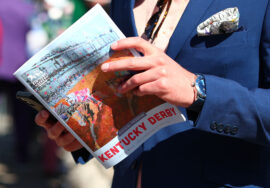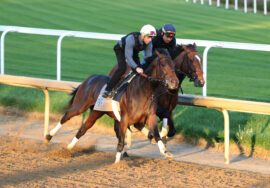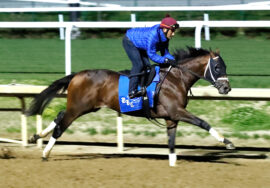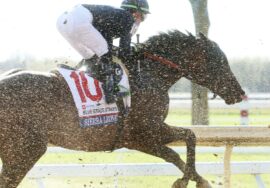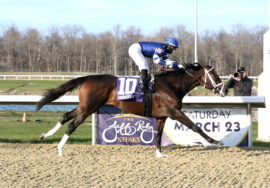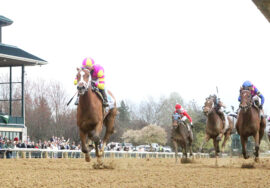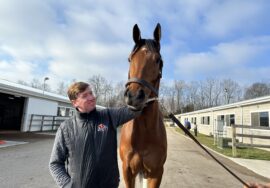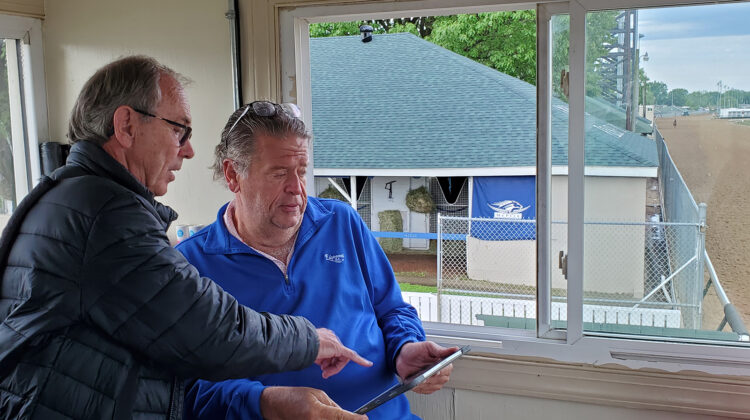
Churchill advisory regarding StrideSAFE study
| The following is an advisory from Churchill Downs’ Equine Medical Director Dr. Will Farmer. We are posting it for informational purposes for our horsemen (Photo above: StrideSAFE CEO Dr. David Lambert, left, and trainer Dale Romans go over data recorded the previous day on horses equipped with the StrideSAFE sensor. Gwen Davis/Davis Innovation photo): The Kentucky Horse Racing Commission has awarded Washington State University a grant to design a program to help trainers, owners and veterinarians prevent catastrophic injuries in their racehorses using the StrideSAFE sensor. Modern life, as we know it, would come to a halt without sensors. Cars would not drive and airplanes couldn’t fly. Sensors are in every sport as well. Every top human athlete carries and is monitored, protected, and improved by sensor technology. In this project we are just catching up with the modern world.In this program all starters during the 2023 Spring meet at Churchill Downs will carry a small 3 ounce sensor in a pocket in the saddlecloth. This sensor will record how the horse is moving 2,400 times every second! The idea is simple: with the sensor we are able to identify subtle abnormalities in high-speed movements of the horse, communicating this information to trainers and veterinarians allows for proactive veterinary intervention to identify a potential underlying cause with the ultimate goal of preventing a catastrophic injury. The StrideSAFE sensor is not “new” or “experimental” in the racing world. This type of sensor has been used in races all around the world. Here in North America we have almost 10,000 cases. What we know is that most catastrophic injuries have a very distinct pattern to the data and often we have seen these changes weeks before the catastrophic injury happened. In other words, the sensor can record stride changes to indicate a potential injury may be coming. Over time the system will learn to selectively identify horses at increased risk with greater sensitivity until only the true “accidents” occur. The sensor data from a race will be available the following day and if you are willing to help us with the project we can send the results for your horse to you and/or your veterinarian. The report is just a traffic light system. Green: within normal limits. Amber: subtle changes in the gait were identified Red: notable changes in the gait were identified which could make the horse 160 times more likely to sustain a catastrophic injury. In some cases a member of the research team may reach out to meet with you and your vet to explain the data. The information learned from this current study is kept confidential and is not shared with anyone outside of the study. Your follow-up is not mandatory, however, your help is greatly encouraged as we strive to advance the welfare of our race horses. Should you have any question please reach out to one of the veterinarians below. David Lambert DVM [email protected], CEO of StrideSAFE Denise Mc Sweeney DVM [email protected], Washington State University Surgery Resident William Farmer DVM, [email protected], CDI Equine Medical Director William Farmer DVM, Equine Medical Director |




